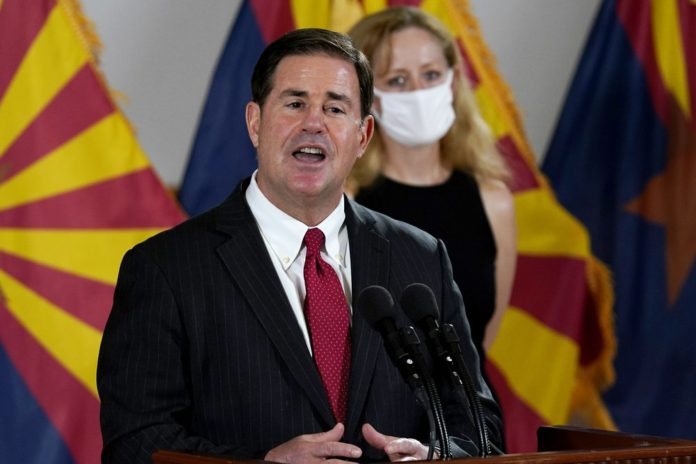
Arizona health officials on Thursday reported a large spike in additional COVID-19 cases, which they attributed largely to a change in the state’s counting method and to a surge in test results.
The Department of Health Services reported 1,753 additional daily cases, up from 685 cases reported Wednesday and smaller daily case numbers on other days during recent weeks. The department also reported 38 deaths.
With the additional cases and deaths reported Thursday, the state’s overall totals increased to 211,660 cases and 5,409 deaths.
The one-day increase in cases was the state’s largest since early August.
Arizona was a national hot spot in June and July after Gov. Doug Ducey lifted stay-home orders, but the numbers of additional cases, hospitalizations and deaths then trended downward after Ducey imposed new restrictions and many local governments mandated face-coverings.
The additional cases reported Thursday include 577, about a third of the total, that DHS Director Dr. Cara Christ said were “probable” COVID-19 cases from September being newly reported under Arizona’s adoption under a national case definition updated by the Council of State and Territorial Epidemiologists.
The state didn’t previously report the 577 “probable” results, as well as others more to be reported Friday from previous months, because they involved less-accurate antigen testing of people who either didn’t have symptoms or have contact with people known to have COVID-19, Christ said in a DHS blog.
Asked during a radio interview on KTAR what else could account for the large number of additional cases reported Thursday, Christ said the data included the largest number of lab results reported in one day. She said the rate of people testing positive for COVID-19 continued to decrease.
Asked about any impact from Labor Day gatherings, she said any spike would be expected 10 to 14 days later. Labor Day was Sept. 7.
“We’re keeping an eye on that,” she during the KTAR interview.
COVID-19-related hospitalization metrics reported by the department as of Wednesday remained at levels that preceded the big surge in June and July.
Seven-day rolling averages of daily new cases and daily deaths were down during the past two weeks, according to Johns Hopkins University data analyzed by The Associated Press.
Republished with the permission of the Associated Press.














